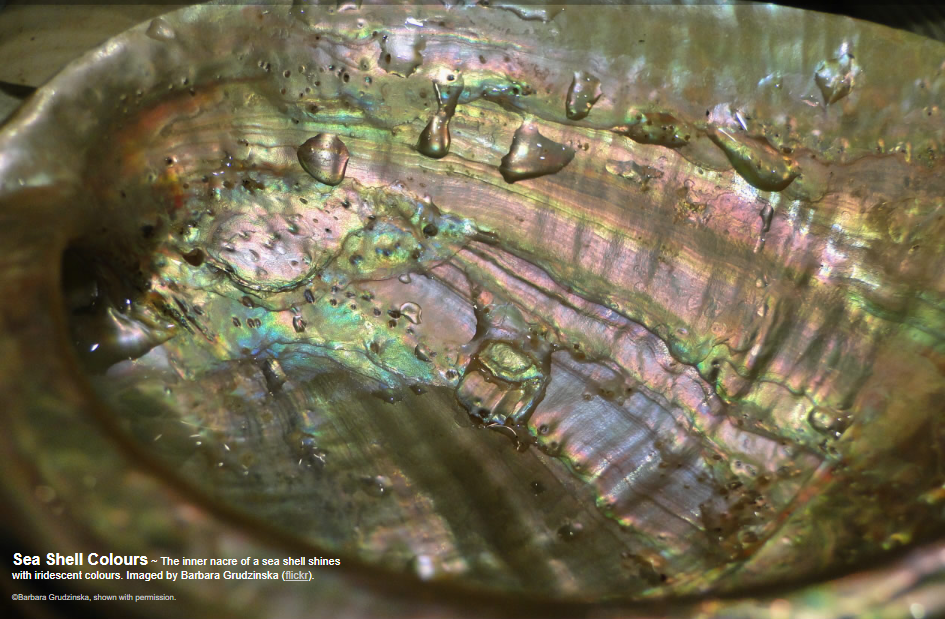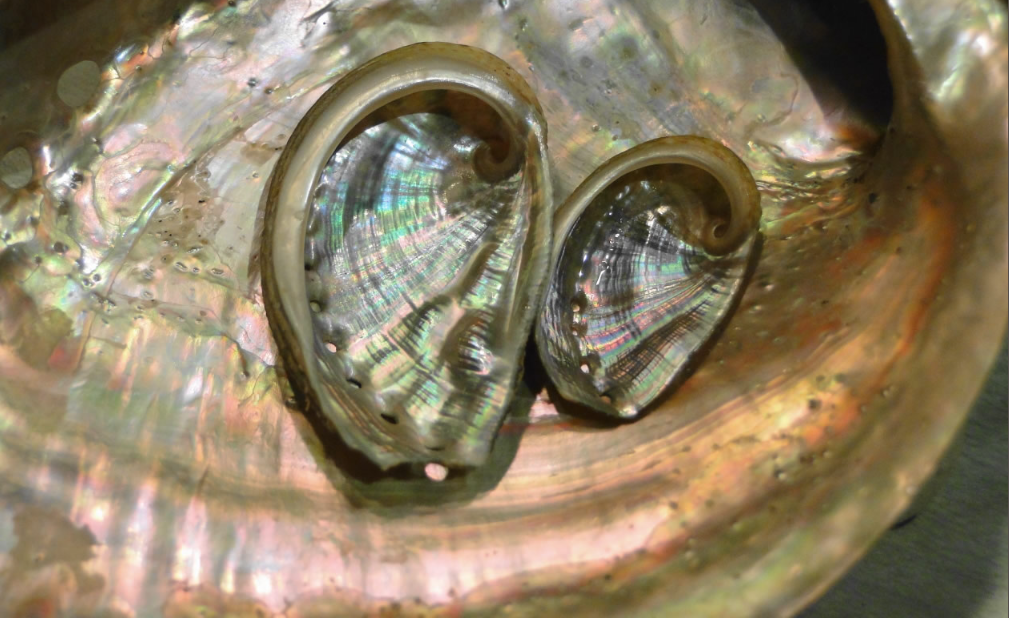OPOD - Sea Shells
OPOD - Sea Shells: Unveiling the Beauty of Nature's Masterpiece
Sea shells, with their captivating beauty and intricate patterns, have long fascinated us. But did you know that the mesmerizing colors and shimmering iridescence found in sea shells are not just a result of random chance? These stunning optical effects are actually a testament to the incredible bio-engineering at work within these natural structures.
At the heart of a sea shell lies a remarkable substance called nacre. Composed of polygonal tiles made of aragonite, a crystalline form of calcium carbonate, nacre is held together by a delicate matrix of conchiolin, which consists of polysaccharide and protein fibers. These tiles, measuring a mere 10 microns across, are meticulously arranged in stacked layers, forming a structure of astonishing regularity.
The formation of this intricate structure is guided by the secretion of proteins. Initially, aragonite crystals randomly nucleate on a thin protein layer. While the crystals naturally tend to grow thicker, proteins selectively absorb onto the top crystal faces, preventing their growth in that direction. Instead, horizontal growth takes place across the layer until contact with adjacent tiles enforces a regular spacing. To limit the thickness of each tile to 0.5 microns, periodic injections of an inhibitor protein are hypothesized to play a crucial role.
The true marvel of sea shell nacre lies in its ability to produce iridescent colors. This optical phenomenon arises from two main factors: multilayer interference and diffraction caused by the outer stepped surface of the nacre. When light interacts with the stacked layers of nacre, it undergoes constructive and destructive interference, resulting in vibrant colors that seem to change as we shift our perspective.
The influence of diffraction on the iridescence of sea shells was first discovered by David Brewster in the 19th century. To demonstrate this, Brewster created a wax cast of a shell's surface, which surprisingly exhibited the same iridescent colors as the original shell. This experiment confirmed that the outer stepped surface of the nacre plays a significant role in diffracting light and enhancing the visual spectacle of sea shells.
The interplay between the structure of sea shells and light is a testament to the wonders of nature's design. As we marvel at their beauty, we can also appreciate the complex processes and mechanisms that have shaped these exquisite creations. Sea shells are not merely ornamental objects; they are intricate masterpieces that offer a glimpse into the intricate world of bio-engineering.
In summary, sea shells possess an awe-inspiring beauty that goes beyond their external appearance. The formation of sea shell nacre, with its precisely arranged aragonite tiles and conchiolin matrix, showcases the remarkable control exerted by proteins during its growth. The resulting iridescence arises from the interplay of multilayer interference and diffraction, which creates a symphony of colors that captivate our senses. By delving into the world of sea shells, we gain a deeper appreciation for the intricate wonders of nature and the incredible bio-engineering that shapes our world.

Sea Shell Colours ~ The inner nacre of a sea shell shines with iridescent colours. Imaged by Barbara Grudzinska (flickr).
©Barbara Grudzinska, shown with permission.

Layers of aragonite tiles Regularly spaced surface grooves
Images ©T L Tan, D Wong & P Lee, Iridescence of a shell of mollusk Haliotis Glabra, Optics Express, Vol. 12, Issue 20, pp. 4847-4854 (2004)
Sea shell nacre is a miracle of bio-engineering. It is made up of polygonal (usually hexagonal) tiles of a very hard crystalline form of calcium carbonate, aragonite, cemented in a thin matrix of conchiolin – polysaccharide and protein fibres. The tiles are each a single crystal and are tessellated in stacked layers. The individual tiles are some 10 micron across.
The structure regularity is remarkable. Protein secretions control its formation. Initially there is random nucleation of aragonite on a thin protein layer. The fastest crystal growth would normally be a direction to thicken the crystals but this is rather neatly prevented by the selective absorption of proteins onto the top crystal faces. Horizontal growth across the layer proceeds instead and contact with adjacent tiles eventually forces a regular spacing. Periodic injections of an inhibitor protein is hypothesised to limit the tile thickness to 0.5 micron. An upper terrace of crystal starts to form on the face of each tile and eventually grows into a second layer. And so on...
The iridescent colours result from multilayer interference and from diffraction by the outer stepped surface of the nacre. The latter was proved in the 19th Century by David Brewster who made a wax cast of a shell surface. The wax cast also showed iridescent colours!


Note: this article has been automatically converted from the old site and may not appear as intended. You can find the original article here.
Reference Atmospheric Optics
If you use any of the definitions, information, or data presented on Atmospheric Optics, please copy the link or reference below to properly credit us as the reference source. Thank you!
-
<a href="https://atoptics.co.uk/blog/opod-sea-shells/">OPOD - Sea Shells</a>
-
"OPOD - Sea Shells". Atmospheric Optics. Accessed on December 22, 2024. https://atoptics.co.uk/blog/opod-sea-shells/.
-
"OPOD - Sea Shells". Atmospheric Optics, https://atoptics.co.uk/blog/opod-sea-shells/. Accessed 22 December, 2024
-
OPOD - Sea Shells. Atmospheric Optics. Retrieved from https://atoptics.co.uk/blog/opod-sea-shells/.